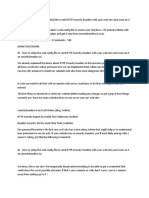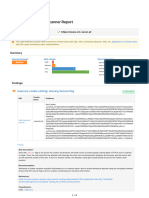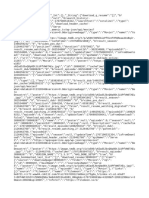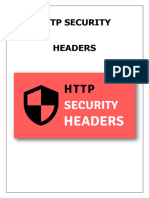0% found this document useful (0 votes)
95 views7 pagesHTTP Security Header
HTTP security headers provide instructions to browsers to help protect websites and users from online threats. Headers like Content Security Policy and X-Frame-Options prevent vulnerabilities like cross-site scripting and clickjacking. Implementing security headers mitigates issues, protects user data, demonstrates a commitment to security, and can positively impact search engine optimization.
Uploaded by
JimCopyright
© © All Rights Reserved
We take content rights seriously. If you suspect this is your content, claim it here.
Available Formats
Download as PDF, TXT or read online on Scribd
0% found this document useful (0 votes)
95 views7 pagesHTTP Security Header
HTTP security headers provide instructions to browsers to help protect websites and users from online threats. Headers like Content Security Policy and X-Frame-Options prevent vulnerabilities like cross-site scripting and clickjacking. Implementing security headers mitigates issues, protects user data, demonstrates a commitment to security, and can positively impact search engine optimization.
Uploaded by
JimCopyright
© © All Rights Reserved
We take content rights seriously. If you suspect this is your content, claim it here.
Available Formats
Download as PDF, TXT or read online on Scribd
/ 7





















































































